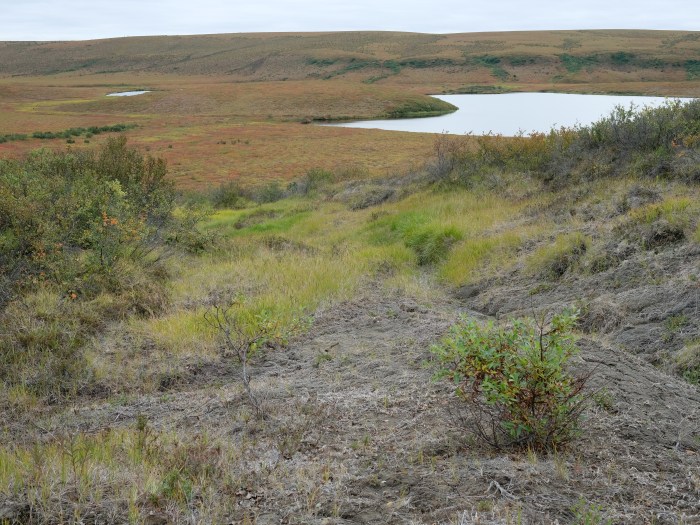UTILE – that’s the short version of this project, which stands for “aUTonomous Image anaLysis to accelerate the discovery and integration of energy matErials.” But the Latin word “utile” also means useful or usable. And indeed, there is hardly anything more useful at present than a tool capable of advancing and accelerating the characterization, development and application of clean energy sources.
That, in a nutshell, is what Dr. Kourosh Malek, Department Head of Artificial Materials Intelligence at Forschungszentrum Jülich (FZJ), IE3-3, and his team intend to do with their project: to develop a data platform for energy materials that automates and thus accelerates and improves the collection, analysis and management of valuable image data from diverse characterization methods across the scientific community using artificial intelligence.
So in the future, there will no longer be employees bending over the images of fuel cells taken by X-ray microtomography, for example, but: finely adjusted algorithms. “You could also say: we train machines in such a way that they deliver faster, more accurate and more reproducible analyses than humans, even those who are very experienced in this field,” says Dr. Kourosh Malek.
To do this, Malek and his team enrich their databases with large amounts of annotated image data and associated metadata, while integrating the intuition of the human gaze: “We need to understand how a lab technician would analyze the images, how they’re thinking, what they’re looking for,” Malek says. This cognitive knowledge combined with advances in cloud computing, will be translated into pre-trained algorithms that can use deep learning to continually draw new conclusions from both existing data and data that will be added in the future.
In the end, this platform will provide the entire energy materials scientific community, particularly those within hydrogen and batteries, with an extremely powerful, highly automated AI-enabled analysis tools. That alone will relieve scientists of countless hours of repetitive analysis work – time that they can in turn invest in researching clean energy sources with human capabilities. After all, the entire process contributes to much needed task of accelerating the development of green energy materials.
Publications
4725570
UTILE
1
https://helmholtz-imaging.de/apa-bold-title.csl
50
date
desc
910
https://helmholtz-imaging.de/wp-content/plugins/zotpress/
%7B%22status%22%3A%22success%22%2C%22updateneeded%22%3Afalse%2C%22instance%22%3Afalse%2C%22meta%22%3A%7B%22request_last%22%3A0%2C%22request_next%22%3A0%2C%22used_cache%22%3Atrue%7D%2C%22data%22%3A%5B%7B%22key%22%3A%22AKSTIDBP%22%2C%22library%22%3A%7B%22id%22%3A4725570%7D%2C%22meta%22%3A%7B%22creatorSummary%22%3A%22Granero%22%2C%22parsedDate%22%3A%222023-11-22%22%2C%22numChildren%22%3A0%7D%2C%22bib%22%3A%22%3Cdiv%20class%3D%5C%22csl-bib-body%5C%22%20style%3D%5C%22line-height%3A%201.35%3B%20padding-left%3A%201em%3B%20text-indent%3A-1em%3B%5C%22%3E%5Cn%20%20%3Cdiv%20class%3D%5C%22csl-entry%5C%22%3EGranero%2C%20A.%20C.%20%282023%29.%20%3Ci%3E%3Cb%3E%3Cspan%20style%3D%5C%22font-style%3Anormal%3B%5C%22%3EUTILE-Oxy%20-%20Deep%20Learning%20to%20Automate%20Video%20Analysis%20of%20Bubble%20Dynamics%20in%20Proton%20Exchange%20Membrane%20Electrolyzers%3C%5C%2Fspan%3E%3C%5C%2Fb%3E%3C%5C%2Fi%3E.%20%3Ca%20class%3D%27zp-ItemURL%27%20href%3D%27https%3A%5C%2F%5C%2Fgithub.com%5C%2Fandyco98%5C%2FUTILE-Oxy%27%3Ehttps%3A%5C%2F%5C%2Fgithub.com%5C%2Fandyco98%5C%2FUTILE-Oxy%3C%5C%2Fa%3E%20%28Original%20work%20published%202023%29%3C%5C%2Fdiv%3E%5Cn%3C%5C%2Fdiv%3E%22%2C%22data%22%3A%7B%22itemType%22%3A%22computerProgram%22%2C%22title%22%3A%22UTILE-Oxy%20-%20Deep%20Learning%20to%20Automate%20Video%20Analysis%20of%20Bubble%20Dynamics%20in%20Proton%20Exchange%20Membrane%20Electrolyzers%22%2C%22creators%22%3A%5B%7B%22creatorType%22%3A%22programmer%22%2C%22firstName%22%3A%22Andr%5Cu00e9%20Colliard%22%2C%22lastName%22%3A%22Granero%22%7D%5D%2C%22abstractNote%22%3A%22We%20present%20%20an%20automated%20workflow%20using%20deep%20learning%20for%20the%20analysis%20of%20videos%20containing%20oxygen%20bubbles%20in%20PEM%20electrolyzers%20by%3A%201.%20preparing%20annotated%20dataset%20and%20training%20models%20in%20order%20to%20conduct%20semantic%20seg-%20mentation%20of%20bubbles%20and%202.%20automating%20the%20extraction%20of%20bubble%20properties%20for%20further%20distribution%20analysis.%22%2C%22versionNumber%22%3A%22%22%2C%22date%22%3A%222023-11-22T14%3A57%3A15Z%22%2C%22system%22%3A%22%22%2C%22company%22%3A%22%22%2C%22programmingLanguage%22%3A%22Python%22%2C%22ISBN%22%3A%22%22%2C%22url%22%3A%22https%3A%5C%2F%5C%2Fgithub.com%5C%2Fandyco98%5C%2FUTILE-Oxy%22%2C%22collections%22%3A%5B%5D%2C%22dateModified%22%3A%222025-05-02T12%3A41%3A38Z%22%7D%7D%2C%7B%22key%22%3A%22RMRQZCJA%22%2C%22library%22%3A%7B%22id%22%3A4725570%7D%2C%22meta%22%3A%7B%22creatorSummary%22%3A%22Colliard-Granero%20et%20al.%22%2C%22parsedDate%22%3A%222023-11-22%22%2C%22numChildren%22%3A1%7D%2C%22bib%22%3A%22%3Cdiv%20class%3D%5C%22csl-bib-body%5C%22%20style%3D%5C%22line-height%3A%201.35%3B%20padding-left%3A%201em%3B%20text-indent%3A-1em%3B%5C%22%3E%5Cn%20%20%3Cdiv%20class%3D%5C%22csl-entry%5C%22%3EColliard-Granero%2C%20A.%2C%20Rodenb%26%23xFC%3Bcher%2C%20C.%2C%20Gompou%2C%20K.%20A.%2C%20Malek%2C%20K.%2C%20Eslamibidgoli%2C%20M.%20J.%2C%20%26amp%3B%20Michael%2C%20E.%20%282023%29.%20%3Ci%3E%3Cb%3E%3Cspan%20style%3D%5C%22font-style%3Anormal%3B%5C%22%3EPolymer%20Electrolyte%20Membrane%20Water%20Electrolyzer%20Oxygen%20Bubble%20Evolution%20Optical%20Video%20Recording%20For%20Deep%20Learning-Enhanced%20Characterization%20of%20Bubble%20Dynamics%20in%20Proton%20Exchange%20Membrane%20Water%20Electrolyzer%20by%20Andr%26%23xE9%3B%20Colliard-Granero%2C%20Keusra%20A.%20Gompou%2C%20Christian%20Rodenb%26%23xFC%3Bcher%2C%20Kourosh%20Malek%2C%20Michael%20H.%20Eikerling%2C%20and%20Mohammad%20J.%20Eslamibidgoli%3C%5C%2Fspan%3E%3C%5C%2Fb%3E%3C%5C%2Fi%3E.%20Zenodo.%20%3Ca%20class%3D%27zp-DOIURL%27%20href%3D%27https%3A%5C%2F%5C%2Fdoi.org%5C%2F10.5281%5C%2Fzenodo.10184579%27%3Ehttps%3A%5C%2F%5C%2Fdoi.org%5C%2F10.5281%5C%2Fzenodo.10184579%3C%5C%2Fa%3E%3C%5C%2Fdiv%3E%5Cn%3C%5C%2Fdiv%3E%22%2C%22data%22%3A%7B%22itemType%22%3A%22dataset%22%2C%22title%22%3A%22Polymer%20Electrolyte%20Membrane%20Water%20Electrolyzer%20Oxygen%20Bubble%20Evolution%20Optical%20Video%20Recording%20For%20Deep%20Learning-Enhanced%20Characterization%20of%20Bubble%20Dynamics%20in%20Proton%20Exchange%20Membrane%20Water%20Electrolyzer%20by%20Andr%5Cu00e9%20Colliard-Granero%2C%20Keusra%20A.%20Gompou%2C%20Christian%20Rodenb%5Cu00fccher%2C%20Kourosh%20Malek%2C%20Michael%20H.%20Eikerling%2C%20and%20Mohammad%20J.%20Eslamibidgoli%22%2C%22creators%22%3A%5B%7B%22creatorType%22%3A%22author%22%2C%22firstName%22%3A%22Andr%5Cu00e9%22%2C%22lastName%22%3A%22Colliard-Granero%22%7D%2C%7B%22creatorType%22%3A%22author%22%2C%22firstName%22%3A%22Christian%22%2C%22lastName%22%3A%22Rodenb%5Cu00fccher%22%7D%2C%7B%22creatorType%22%3A%22author%22%2C%22firstName%22%3A%22Keusra%20Armel%22%2C%22lastName%22%3A%22Gompou%22%7D%2C%7B%22creatorType%22%3A%22author%22%2C%22firstName%22%3A%22Kourosh%22%2C%22lastName%22%3A%22Malek%22%7D%2C%7B%22creatorType%22%3A%22author%22%2C%22firstName%22%3A%22Mohammad%20Javad%22%2C%22lastName%22%3A%22Eslamibidgoli%22%7D%2C%7B%22creatorType%22%3A%22author%22%2C%22firstName%22%3A%22Eikerling%22%2C%22lastName%22%3A%22Michael%22%7D%5D%2C%22abstractNote%22%3A%22Dataset%20used%20for%20the%20training%20of%20the%20segmentation%20model%20employed%20in%20the%20work%20%5C%22Deep%20Learning-Enhanced%20Characterization%20of%20Bubble%20Dynamics%20in%20Proton%20Exchange%20Membrane%20Water%20Electrolyzer%5C%22%20by%20Andr%5Cu00e9%20Colliard-Granero%2C%20Keusra%20A.%20Gompou%2C%20Christian%20Rodenb%5Cu00fccher%2C%20Kourosh%20Malek%2C%20Michael%20H.%20Eikerling%2C%20and%20Mohammad%20J.%20Eslamibidgoli.%20This%20dataset%20consists%20in%2035%20images%20and%20the%20corresponding%20manual%20annotated%20masks%20of%20diverse%20bubbly%20scenarios%20extracted%20from%20the%20optical%20video%20recording%20of%20a%20PEMWE%20with%20a%20transparent%20flow%20field.%22%2C%22identifier%22%3A%22%22%2C%22type%22%3A%22%22%2C%22versionNumber%22%3A%22%22%2C%22date%22%3A%222023-11-22%22%2C%22repository%22%3A%22Zenodo%22%2C%22repositoryLocation%22%3A%22%22%2C%22format%22%3A%22%22%2C%22DOI%22%3A%2210.5281%5C%2Fzenodo.10184579%22%2C%22citationKey%22%3A%22%22%2C%22url%22%3A%22https%3A%5C%2F%5C%2Fzenodo.org%5C%2Frecords%5C%2F10184579%22%2C%22language%22%3A%22eng%22%2C%22collections%22%3A%5B%5D%2C%22dateModified%22%3A%222024-01-25T12%3A34%3A39Z%22%7D%7D%2C%7B%22key%22%3A%22ITWX9N7E%22%2C%22library%22%3A%7B%22id%22%3A4725570%7D%2C%22meta%22%3A%7B%22creatorSummary%22%3A%22Colliard-Granero%20et%20al.%22%2C%22parsedDate%22%3A%222023-10-18%22%2C%22numChildren%22%3A1%7D%2C%22bib%22%3A%22%3Cdiv%20class%3D%5C%22csl-bib-body%5C%22%20style%3D%5C%22line-height%3A%201.35%3B%20padding-left%3A%201em%3B%20text-indent%3A-1em%3B%5C%22%3E%5Cn%20%20%3Cdiv%20class%3D%5C%22csl-entry%5C%22%3EColliard-Granero%2C%20A.%2C%20Jitsev%2C%20J.%2C%20Eikerling%2C%20M.%20H.%2C%20Malek%2C%20K.%2C%20%26amp%3B%20Eslamibidgoli%2C%20M.%20J.%20%282023%29.%20%3Cb%3EUTILE-Gen%3A%20Automated%20Image%20Analysis%20in%20Nanoscience%20Using%20Synthetic%20Dataset%20Generator%20and%20Deep%20Learning%3C%5C%2Fb%3E.%20%3Ci%3EACS%20Nanoscience%20Au%3C%5C%2Fi%3E%2C%20%3Ci%3E3%3C%5C%2Fi%3E%285%29%2C%20398%26%23x2013%3B407.%20%3Ca%20class%3D%27zp-ItemURL%27%20href%3D%27https%3A%5C%2F%5C%2Fdoi.org%5C%2F10.1021%5C%2Facsnanoscienceau.3c00020%27%3Ehttps%3A%5C%2F%5C%2Fdoi.org%5C%2F10.1021%5C%2Facsnanoscienceau.3c00020%3C%5C%2Fa%3E%3C%5C%2Fdiv%3E%5Cn%3C%5C%2Fdiv%3E%22%2C%22data%22%3A%7B%22itemType%22%3A%22journalArticle%22%2C%22title%22%3A%22UTILE-Gen%3A%20Automated%20Image%20Analysis%20in%20Nanoscience%20Using%20Synthetic%20Dataset%20Generator%20and%20Deep%20Learning%22%2C%22creators%22%3A%5B%7B%22creatorType%22%3A%22author%22%2C%22firstName%22%3A%22Andr%5Cu00e9%22%2C%22lastName%22%3A%22Colliard-Granero%22%7D%2C%7B%22creatorType%22%3A%22author%22%2C%22firstName%22%3A%22Jenia%22%2C%22lastName%22%3A%22Jitsev%22%7D%2C%7B%22creatorType%22%3A%22author%22%2C%22firstName%22%3A%22Michael%20H.%22%2C%22lastName%22%3A%22Eikerling%22%7D%2C%7B%22creatorType%22%3A%22author%22%2C%22firstName%22%3A%22Kourosh%22%2C%22lastName%22%3A%22Malek%22%7D%2C%7B%22creatorType%22%3A%22author%22%2C%22firstName%22%3A%22Mohammad%20J.%22%2C%22lastName%22%3A%22Eslamibidgoli%22%7D%5D%2C%22abstractNote%22%3A%22This%20work%20presents%20the%20development%20and%20implementation%20of%20a%20deep%20learning-based%20workflow%20for%20autonomous%20image%20analysis%20in%20nanoscience.%20A%20versatile%2C%20agnostic%2C%20and%20configurable%20tool%20was%20developed%20to%20generate%20instance-segmented%20imaging%20datasets%20of%20nanoparticles.%20The%20synthetic%20generator%20tool%20employs%20domain%20randomization%20to%20expand%20the%20image%5C%2Fmask%20pairs%20dataset%20for%20training%20supervised%20deep%20learning%20models.%20The%20approach%20eliminates%20tedious%20manual%20annotation%20and%20allows%20training%20of%20high-performance%20models%20for%20microscopy%20image%20analysis%20based%20on%20convolutional%20neural%20networks.%20We%20demonstrate%20how%20the%20expanded%20training%20set%20can%20significantly%20improve%20the%20performance%20of%20the%20classification%20and%20instance%20segmentation%20models%20for%20a%20variety%20of%20nanoparticle%20shapes%2C%20ranging%20from%20spherical-%2C%20cubic-%2C%20to%20rod-shaped%20nanoparticles.%20Finally%2C%20the%20trained%20models%20were%20deployed%20in%20a%20cloud-based%20analytics%20platform%20for%20the%20autonomous%20particle%20analysis%20of%20microscopy%20images.%22%2C%22date%22%3A%222023-10-18%22%2C%22language%22%3A%22%22%2C%22DOI%22%3A%2210.1021%5C%2Facsnanoscienceau.3c00020%22%2C%22ISSN%22%3A%22%22%2C%22url%22%3A%22https%3A%5C%2F%5C%2Fdoi.org%5C%2F10.1021%5C%2Facsnanoscienceau.3c00020%22%2C%22collections%22%3A%5B%5D%2C%22dateModified%22%3A%222024-01-25T12%3A36%3A11Z%22%7D%7D%2C%7B%22key%22%3A%22FIECFLZ5%22%2C%22library%22%3A%7B%22id%22%3A4725570%7D%2C%22meta%22%3A%7B%22creatorSummary%22%3A%22Mathur%22%2C%22numChildren%22%3A1%7D%2C%22bib%22%3A%22%3Cdiv%20class%3D%5C%22csl-bib-body%5C%22%20style%3D%5C%22line-height%3A%201.35%3B%20padding-left%3A%201em%3B%20text-indent%3A-1em%3B%5C%22%3E%5Cn%20%20%3Cdiv%20class%3D%5C%22csl-entry%5C%22%3EMathur%2C%20A.%20%28n.d.%29.%20%3Cb%3EFAIR%20Standards%20for%20Imaging%20Data%20Management%20in%20Material%20Research%3C%5C%2Fb%3E.%3C%5C%2Fdiv%3E%5Cn%3C%5C%2Fdiv%3E%22%2C%22data%22%3A%7B%22itemType%22%3A%22journalArticle%22%2C%22title%22%3A%22FAIR%20Standards%20for%20Imaging%20Data%20Management%20in%20Material%20Research%22%2C%22creators%22%3A%5B%7B%22creatorType%22%3A%22author%22%2C%22firstName%22%3A%22Abhishek%22%2C%22lastName%22%3A%22Mathur%22%7D%5D%2C%22abstractNote%22%3A%22%22%2C%22date%22%3A%22%22%2C%22language%22%3A%22en%22%2C%22DOI%22%3A%22%22%2C%22ISSN%22%3A%22%22%2C%22url%22%3A%22%22%2C%22collections%22%3A%5B%5D%2C%22dateModified%22%3A%222025-05-02T08%3A45%3A09Z%22%7D%7D%2C%7B%22key%22%3A%22TFVMH4P8%22%2C%22library%22%3A%7B%22id%22%3A4725570%7D%2C%22meta%22%3A%7B%22creatorSummary%22%3A%22Kamenan%22%2C%22numChildren%22%3A1%7D%2C%22bib%22%3A%22%3Cdiv%20class%3D%5C%22csl-bib-body%5C%22%20style%3D%5C%22line-height%3A%201.35%3B%20padding-left%3A%201em%3B%20text-indent%3A-1em%3B%5C%22%3E%5Cn%20%20%3Cdiv%20class%3D%5C%22csl-entry%5C%22%3EKamenan%2C%20D.%20K.%20B.%20%28n.d.%29.%20%3Cb%3EDEEP%20LEARNING%20TO%20AUTOMATE%20IMAGE%20ANALYSIS%20OF%20OXYGEN%20BUBBLE%20DYNAMICS%20IN%20PROTON%20EXCHANGE%20MEMBRANE%20ELECTROLYZERS%3C%5C%2Fb%3E.%3C%5C%2Fdiv%3E%5Cn%3C%5C%2Fdiv%3E%22%2C%22data%22%3A%7B%22itemType%22%3A%22journalArticle%22%2C%22title%22%3A%22DEEP%20LEARNING%20TO%20AUTOMATE%20IMAGE%20ANALYSIS%20OF%20OXYGEN%20BUBBLE%20DYNAMICS%20IN%20PROTON%20EXCHANGE%20MEMBRANE%20ELECTROLYZERS%22%2C%22creators%22%3A%5B%7B%22creatorType%22%3A%22author%22%2C%22firstName%22%3A%22Dr%20Koua%20B%22%2C%22lastName%22%3A%22Kamenan%22%7D%5D%2C%22abstractNote%22%3A%22In%20this%20master%20science%20work%2C%20I%20have%20tackled%20this%20problem%20by%20making%20used%20of%20a%20deep%20learning%20to%20develop%20reliable%2C%20less%20expensive%20and%20rapid%20approach%20to%20analyse%20bubble%20area%20distributions.%20The%20work%20encompassed%20the%20training%20and%20evaluation%20of%20a%20Unet%20%282D%29%20model%20on%20a%20collection%20of%2035%20manually%20annotated%20images%20%28at%20a%20scale%20of%2025%20mm%29%20for%20semantic%20segmentation%2C%20followed%20by%20the%20analysis%20of%20bubble%20area%20distributions.%20The%20results%20obtained%20demonstrate%20good%20model%20performance%20and%20robustness.%22%2C%22date%22%3A%22%22%2C%22language%22%3A%22en%22%2C%22DOI%22%3A%22%22%2C%22ISSN%22%3A%22%22%2C%22url%22%3A%22%22%2C%22collections%22%3A%5B%5D%2C%22dateModified%22%3A%222025-05-02T08%3A11%3A47Z%22%7D%7D%2C%7B%22key%22%3A%22WCQ8XG8M%22%2C%22library%22%3A%7B%22id%22%3A4725570%7D%2C%22meta%22%3A%7B%22numChildren%22%3A1%7D%2C%22bib%22%3A%22%3Cdiv%20class%3D%5C%22csl-bib-body%5C%22%20style%3D%5C%22line-height%3A%201.35%3B%20padding-left%3A%201em%3B%20text-indent%3A-1em%3B%5C%22%3E%5Cn%20%20%3Cdiv%20class%3D%5C%22csl-entry%5C%22%3E%3Cb%3EDeep%20learning-enhanced%20characterization%20of%20bubble%20dynamics%20in%20proton%20exchange%20membrane%20water%20electrolyzers%20-%20Physical%20Chemistry%20Chemical%20Physics%20%28RSC%20Publishing%29%3C%5C%2Fb%3E.%20%28n.d.%29.%20Retrieved%20May%2028%2C%202024%2C%20from%20%3Ca%20class%3D%27zp-ItemURL%27%20href%3D%27https%3A%5C%2F%5C%2Fpubs.rsc.org%5C%2Fen%5C%2Fcontent%5C%2Farticlelanding%5C%2F2024%5C%2Fcp%5C%2Fd3cp05869g%27%3Ehttps%3A%5C%2F%5C%2Fpubs.rsc.org%5C%2Fen%5C%2Fcontent%5C%2Farticlelanding%5C%2F2024%5C%2Fcp%5C%2Fd3cp05869g%3C%5C%2Fa%3E%3C%5C%2Fdiv%3E%5Cn%3C%5C%2Fdiv%3E%22%2C%22data%22%3A%7B%22itemType%22%3A%22webpage%22%2C%22title%22%3A%22Deep%20learning-enhanced%20characterization%20of%20bubble%20dynamics%20in%20proton%20exchange%20membrane%20water%20electrolyzers%20-%20Physical%20Chemistry%20Chemical%20Physics%20%28RSC%20Publishing%29%22%2C%22creators%22%3A%5B%5D%2C%22abstractNote%22%3A%22%22%2C%22date%22%3A%22%22%2C%22url%22%3A%22https%3A%5C%2F%5C%2Fpubs.rsc.org%5C%2Fen%5C%2Fcontent%5C%2Farticlelanding%5C%2F2024%5C%2Fcp%5C%2Fd3cp05869g%22%2C%22language%22%3A%22%22%2C%22collections%22%3A%5B%5D%2C%22dateModified%22%3A%222024-05-28T12%3A04%3A34Z%22%7D%7D%5D%7D
Granero, A. C. (2023).
UTILE-Oxy - Deep Learning to Automate Video Analysis of Bubble Dynamics in Proton Exchange Membrane Electrolyzers.
https://github.com/andyco98/UTILE-Oxy (Original work published 2023)
Colliard-Granero, A., Rodenbücher, C., Gompou, K. A., Malek, K., Eslamibidgoli, M. J., & Michael, E. (2023).
Polymer Electrolyte Membrane Water Electrolyzer Oxygen Bubble Evolution Optical Video Recording For Deep Learning-Enhanced Characterization of Bubble Dynamics in Proton Exchange Membrane Water Electrolyzer by André Colliard-Granero, Keusra A. Gompou, Christian Rodenbücher, Kourosh Malek, Michael H. Eikerling, and Mohammad J. Eslamibidgoli. Zenodo.
https://doi.org/10.5281/zenodo.10184579
Colliard-Granero, A., Jitsev, J., Eikerling, M. H., Malek, K., & Eslamibidgoli, M. J. (2023).
UTILE-Gen: Automated Image Analysis in Nanoscience Using Synthetic Dataset Generator and Deep Learning.
ACS Nanoscience Au,
3(5), 398–407.
https://doi.org/10.1021/acsnanoscienceau.3c00020
Mathur, A. (n.d.). FAIR Standards for Imaging Data Management in Material Research.
Kamenan, D. K. B. (n.d.). DEEP LEARNING TO AUTOMATE IMAGE ANALYSIS OF OXYGEN BUBBLE DYNAMICS IN PROTON EXCHANGE MEMBRANE ELECTROLYZERS.
Deep learning-enhanced characterization of bubble dynamics in proton exchange membrane water electrolyzers - Physical Chemistry Chemical Physics (RSC Publishing). (n.d.). Retrieved May 28, 2024, from
https://pubs.rsc.org/en/content/articlelanding/2024/cp/d3cp05869g



